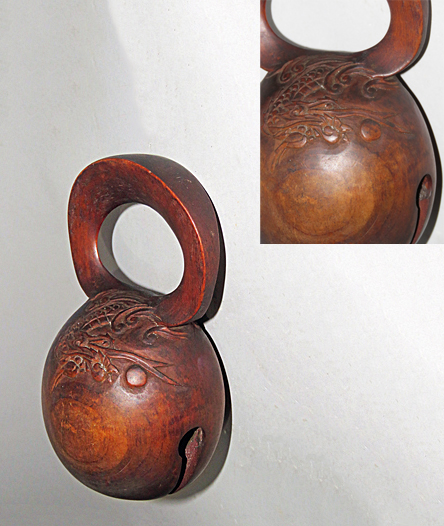
Owner: HWMC
Catalogue #: 2AS-IDST-86
Slit Drums
Korean 'Mokt’ak' (with dragon)
Korea
Korean Buddist
Wood
Late 19th – Early 20th century
Height: 7 in; Width of bell: 3.5 in
Idiophones – Struck Idiophones – Slit Drums
The moktak, or wooden handbell, is an important part of Korean Buddhist temple life and is the most often used instrument in Buddhist ceremonies. It evolved from the ornately carved wooden fish of the Chinese ‘muyu’ and Japanese ‘mokugyo’ versions; however, the Korean moktak is roundish in shape and usually hand-held with a loop-type handle, all carved from a single piece of wood. In Vietnam it is called a mock gnu.
Unusual about this older Korean moktak is the beautiful hand carving of a dragon with the front on one side and the back of the dragon on the other side of the bell, just below the handle. The Korean word moktak means ‘mok’ (wood) and ‘tak (hit). This simple instrument is used in the morning to call people to the Buddha Hall for morning practice. Throughout the day it is used during ceremonies often as a signaling device, along with accompanying the daily chanting of the sutra (scripture). The moktak comes in various sizes.
In Korean Buddhism there are two separate words used to distinguish the two types of wooden handbells. Seen here is the moktak, referring to a smaller-sized, handheld variant, and the other one is the Mogeo, a full-sized wooden bell, that is oblong in shape and resembles a fish or dragon, with a hollow core and hung from the ceiling.
